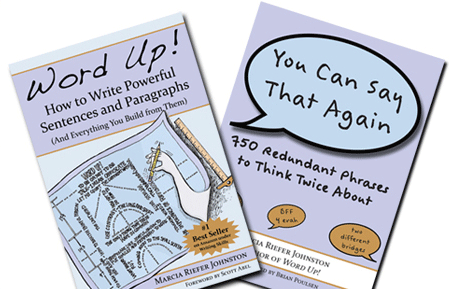
If the editor-in-chief at Houghton Mifflin had had his way in 1959, Julia Child’s best-selling Mastering the Art of French Cooking — possibly the most influential work in American cookbook history — would never have been published. Even after Julia spent over a year tightening her manuscript at the editor’s request, condensing it as far as she felt she could, he still rejected it, judging it “so huge, expensive, and elaborate that it was certain to seem formidable ‘to the American housewife.'” *
This editor thought he knew his audience. He was wrong.
Julia knew her audience. She changed publishers. In 1961, Alfred A. Knopf served up this monumental pièce de résistance — all 734 pages — to the cooking world. That world, like Knopf’s, has never been the same.
Know your audience. It’s Rule #1. It’s simple. It’s fundamental. And it’s as easy to dismiss as a check box. (I always know something about my audience.) This rule skirts the question that matters: How well should I know my audience? After reading Laura Shapiro’s short biography Julia Child: A Life, I’m more convinced than ever that if I want my words to be read — whether I’m writing for pleasure or for pay — I, like Julia, must envision my readers precisely and constantly.
Julia’s envisioned reader was a virtual companion, an inseparable tagalong full of curiosity. This persona, a composite of “young bride” and “chef-hostess,” focused and energized Julia’s writing. As Shapiro says,
This imagined reader… who couldn’t cook until the right book fell into her hands, had a permanent place in Julia’s consciousness and directly inspired the immense amount of detail that characterized her recipes. Like a ghost from Julia’s own past, she trailed Julia from kitchen to desk and back again, forever trying to figure out whether the roast was done, why the chops were steaming in the pan instead of browning properly, what made the cream puffs soggy, and exactly how thick the beef slices should be: a quarter inch? an eighth of an inch?
Julia wrote specifically for people interested in creating peak experiences with food. These readers were so real to her, and so important to her, that she began her foreword in Mastering by describing them:
This is a book for the servantless American cook who can be unconcerned on occasion with budgets, waistlines, time schedules, children’s meals, the parent-chauffeur-den-mother syndrome, or anything else which might interfere with the enjoyment of producing something wonderful to eat.
If only my readers were always this clear to me, and this central to my work.
Too often, I have only a superficial sense of the human beings on the receiving end of my efforts. For example, when I’m hired to describe how to install or use or repair some device, I rarely know enough about the installers/users/repairers to make solid decisions on their behalf.
- I don’t know how familiar they are with this product or with similar products.
- I don’t know what terms and concepts they already understand.
- I don’t know their surroundings, motivations, frustrations, burning questions.
Such indistinct personas — unlike Julia’s easy-to-conjure, would-be gourmets — can’t tell me what they need. I can’t hear them. I can’t see them. Even if I write well for them, I can’t write effectively.
How satisfying, then, to get to write for the occasional reader whom I can imagine fully and accurately. In these cases, writing is like making the perfect gift for a friend. The whole time I’m working on it, I have confidence that the recipient will open it and say, “I can’t wait to use this” — and mean it. Julia must have felt this very confidence every time she placed her book in the hands of an eager young cook.
——–
*Source: Julia Child: A Life by Laura Shapiro



This is the best part of writing for me.
I am more and more convinced that the model of the writer as independent arbiter between user and developer is not tenable. You cannot adequately know the reader by study alone. The writer is not an emissary of the developer, sent to educate the people in the ways of the developer. They are an emissary of the user community, sent from the people to the developers. They are a hero, sent from the tribe to win a prize of great worth, a Prometheus sent to steal fire from the Gods.
This, certainly, was the case with Julia Child. She was not a French Chef by trade, but an American housewife seeking to create peak experiences who set out to steal the secret of French cooking from the culinary gods of Paris. She knew her audience because she was her audience. And that, I am more and more convinced, is the only way it really works.
Mark, Excellent points. Thanks. I especially like “She knew her audience because she was her audience.” That’s the ideal: complete identification. The bigger the gap between writer (or developer) and audience, the more effort it takes for the writer/developer to empathize and anticipate the audience’s needs. An accurate persona — like a well-crafted character in a transporting piece of fiction — goes a long way toward getting people who write or create software (or do whatever they do) out of their own skin.
Good to hear from you again, Keith. I’m with you on “the best part of writing.” Without that connection with someone on the other end — you, for example — it’s just a bunch of scribbles.